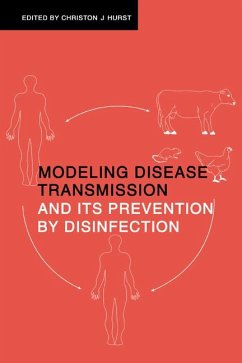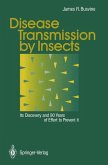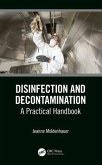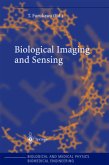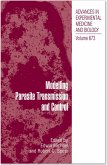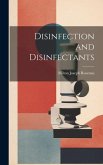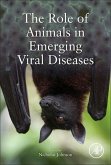Pathogenic microorganisms exploit a number of different routes for transmission and this book demonstrates how the spread of disease can be prevented through the practices of disinfection and controlling microbial growth. The book is organised into four sections. The first section addresses the processes of infectious disease transmission and considers how best to minimise the spread of disease. The second section deals with the prevention of infectious diseases that are transmitted by water or food; transmission by aerosols, environmental surfaces and medical devices is considered next. The fourth and final section discusses some general mechanisms of disinfection. Modeling Disease Transmission includes contributions from leading scientists, who provide a wide-ranging synthesis of the problems and prospects for containing the spread of human infectious diseases.
Table of contents:
Preface; 1. The transmission and prevention of disease C. J. Hurst and P. A. Murphy; 2. Strategies for modeling microbial colonization of the human body in health and disease R. A. Ross and M T Lee; 3. Role of pathogen monitoring in microbial risk assessment J. B. Rose, J. T. Lisle and C. N. Haas; 4. Estimating the risk of acquiring infectious disease from ingestion of water C. J. Hurst, R. M. Clark and S. E. Regli; 5. Bacterial resistance to potable water disinfectants M. H. Stewart and B. H. Olson; 6. Preventing foodborne infectious disease C. J. Hurst; 7. Disinfection of microbial aerosols S. Clark and P. Scarpino; 8.Transmission of viral infections through animate and inanimate surfaces and infection control through chemical disinfection S. A. Sattar and V. S. Springthorpe; 9. The role of chemical disinfectants in controlling bacterial contaminants on environmental surfaces D. J. Gaber, T. M. Cusack and E. Scott; 10. Sterilization and disinfection of medical devices A. B. Margolin and V. C. Chamberlain; 11. Ultraviolet light disinfection of water and wastewater P. F. Roessler and B. F. Severin; 12. Thermal inactivation of microorganisms G. Le Jean and G. Abraham; Index.
Pathogenic microorganisms exploit a number of different routes for transmission and this book demonstrates how the spread of disease can be prevented through the practices of disinfection and controlling microbial growth.
Describes how disease agents are transmitted and the methods by which their spread is prevented.
Table of contents:
Preface; 1. The transmission and prevention of disease C. J. Hurst and P. A. Murphy; 2. Strategies for modeling microbial colonization of the human body in health and disease R. A. Ross and M T Lee; 3. Role of pathogen monitoring in microbial risk assessment J. B. Rose, J. T. Lisle and C. N. Haas; 4. Estimating the risk of acquiring infectious disease from ingestion of water C. J. Hurst, R. M. Clark and S. E. Regli; 5. Bacterial resistance to potable water disinfectants M. H. Stewart and B. H. Olson; 6. Preventing foodborne infectious disease C. J. Hurst; 7. Disinfection of microbial aerosols S. Clark and P. Scarpino; 8.Transmission of viral infections through animate and inanimate surfaces and infection control through chemical disinfection S. A. Sattar and V. S. Springthorpe; 9. The role of chemical disinfectants in controlling bacterial contaminants on environmental surfaces D. J. Gaber, T. M. Cusack and E. Scott; 10. Sterilization and disinfection of medical devices A. B. Margolin and V. C. Chamberlain; 11. Ultraviolet light disinfection of water and wastewater P. F. Roessler and B. F. Severin; 12. Thermal inactivation of microorganisms G. Le Jean and G. Abraham; Index.
Pathogenic microorganisms exploit a number of different routes for transmission and this book demonstrates how the spread of disease can be prevented through the practices of disinfection and controlling microbial growth.
Describes how disease agents are transmitted and the methods by which their spread is prevented.

